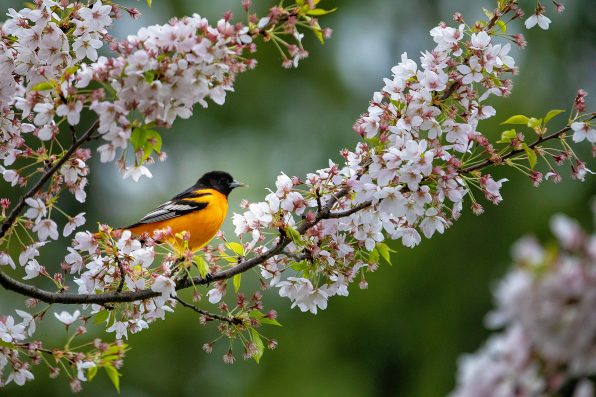In Case You Were Curious, Here’s How Birds Actually Sleep

When it’s time to get some shut-eye, most animals, including humans, tend to lie down. Birds, on the other hand, engage in sleep behaviors that are quite different.
Their sleep patterns are similar to mammals, but that’s basically all we have in common with them in terms of sleep.
Like humans and other mammals, birds experience two states of sleep: a lighter, dreamless type called slow wave sleep (SWS) and a deeper type known as rapid eye movement (REM) sleep. Birds usually get about 16 seconds of REM sleep, lasting a much shorter time than mammals.
In the wild, sleeping too much or too little can be dangerous. Getting an adequate amount of rest is important for all creatures across the animal kingdom.
Sleep slows down the metabolism, allowing animals to conserve energy. It can even improve some birds’ abilities to remember songs.
In 2008, scientists found that young zebra finches practice songs from adult finches in their sleep. The next day, they showed improvements in their songs.
If young birds experience a lack of sleep or have their sleep consistently interrupted, their learning and memory development can be negatively affected.
Artificial light, especially in urban areas, can disrupt birds’ sleep, causing them to be disoriented. Some sleep-deprived birds have been found to fly in circles around artificial light and crash into brightly lit buildings.
Obviously, sleep has its benefits, but it leaves birds highly vulnerable to predators. Different species of birds have evolved unique sleep adaptations that allow them to get sufficient rest while staying safe.

emranashraf – stock.adobe.com – illustrative purposes only
For example, chinstrap penguins take approximately 10,000 micro-naps a day to avoid falling asleep fully. That way, they can watch over their young chicks. Their naps add up to a total of 11 hours of sleep.
Other birds, like ducks and ostriches, will sleep with one eye open to keep a lookout for predators. A few bird species, such as the frigatebird, can even sleep while flying.
During its flight, one or both halves of its brain may be asleep. A frigatebird may also sleep with one eye open so they don’t crash into anything.
These birds get less than an hour of sleep per day when migrating, but they somehow don’t become sleep-deprived.
Furthermore, the common poorwill is the only bird species that hibernates. It hibernates on the ground in meadows or shrubby areas, camouflaged by its mottled feathers.
Hummingbirds participate in a similar process called torpor. Rather than lasting for a few weeks to a few months like hibernation, torpor lasts for just a few hours.
Hummingbirds will enter a deep torpor that persists all night long. During this time, their body temperature will drop by about 20 degrees Fahrenheit. Every morning, they warm themselves back up and emerge from their temporary hibernation.
Sign up for Chip Chick’s newsletter and get stories like this delivered to your inbox.
More About:Animals





